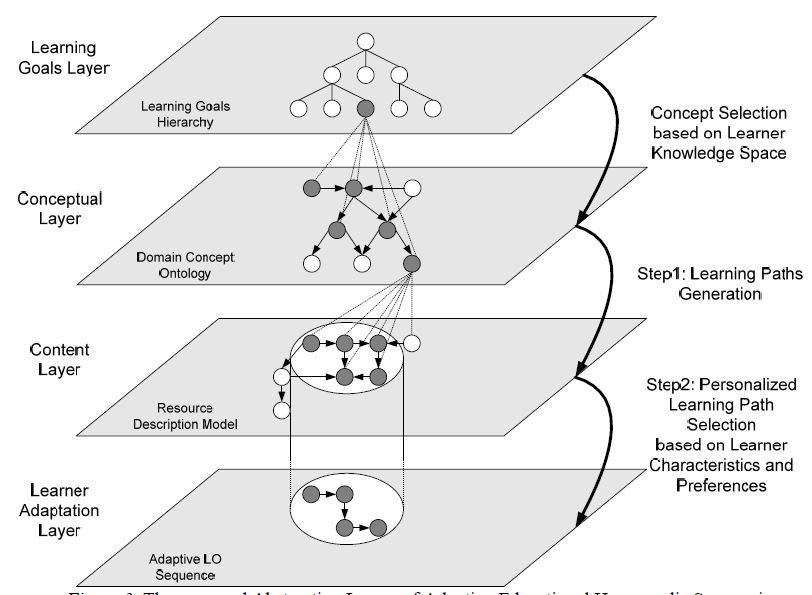Concepts Path Graph: различия между версиями
Tanya (обсуждение | вклад) Нет описания правки |
Tanya (обсуждение | вклад) Нет описания правки |
||
| (не показано 5 промежуточных версий этого же участника) | |||
| Строка 1: | Строка 1: | ||
'''Concepts Path Graph ( | '''Concepts Path Graph (CPG)''' — [[Граф_путей_концептов|граф путей концептов]] | ||
'''Concepts Path Graph ( | '''Concepts Path Graph (CPG)''' is a [[Directed_acyclic_graph|directed acyclic graph]] that represents a set of sequencing rules which determine the sequence of concepts. | ||
'''Concepts Path Graph''' represents the structure of the concepts of the Domain Concept Ontology that matches the learning goal in hand. | '''Concepts Path Graph''' represents the structure of the concepts of the Domain Concept Ontology that matches the learning goal in hand. The concepts contained in the '''CPG''' are selected based on the connection between the Learning Goals Hierarchy and the Domain Concept Ontology. The structure of the '''CPG''' is directly inherited by the structure of the Domain Concept Ontology. '''CPG''' is a simple [[Directed_graph|directed graph]], that is, a directed graph having no multiple [[node]]s. This means that each concept is contained only once in the '''CPG'''. Additionally, '''CPG''' is an [[Directed_acyclic_graph|acyclic directed graph]], that is, a directed graph containing no directed [[cycle]]s. | ||
The concepts contained in the ''' | This means that in every possible concept sequence represented by the '''CPG''', each concept has a unique existence. | ||
The structure of the ''' | |||
''' | |||
This means that each concept is contained only once in the ''' | |||
Additionally, ''' | |||
This means that in every possible concept sequence represented by the ''' | |||
[[File:LPG.JPG]] | |||
==References== | ==References== | ||
*Carchiolo V., Longheu A., Malgeri M., Mangioni G. Automatic generation of learning paths. — In Proceedings of the 10th IEEE International Conference on Electronics, Circuits and Systems ICECS 2003, IEEE, Vol. 3 (2003), 1236–1239. | |||
*Karampiperis P., Sampson D. Adaptive learning resources sequencing in educational hypermedia systems. — Educational Technology & Society, 8, 4 (2005), 128–147. | *Karampiperis P., Sampson D. Adaptive learning resources sequencing in educational hypermedia systems. — Educational Technology & Society, 8, 4 (2005), 128–147. | ||
*Pukkhem N., Evens M.W., Vatanawood W. The Concept Path Combination Model for Supporting a Personalized Learning Path in Adaptive Educational Systems. — In the Proceedings of the 2006 International Conference on e-Learning, e-Business, Enterprise Information Systems, e-Government, and Outsourcing (EEE’06), (2006), 10-16. | *Pukkhem N., Evens M.W., Vatanawood W. The Concept Path Combination Model for Supporting a Personalized Learning Path in Adaptive Educational Systems. — In the Proceedings of the 2006 International Conference on e-Learning, e-Business, Enterprise Information Systems, e-Government, and Outsourcing (EEE’06), (2006), 10-16. | ||
* | *Grubišić A., Stankov S., Žitko B. Adaptive Courseware: A Literature Review. — Journal of Universal Computer Science, vol. 21, no. 9 (2015), 1168-1209. | ||
Текущая версия от 09:13, 17 января 2017
Concepts Path Graph (CPG) — граф путей концептов
Concepts Path Graph (CPG) is a directed acyclic graph that represents a set of sequencing rules which determine the sequence of concepts.
Concepts Path Graph represents the structure of the concepts of the Domain Concept Ontology that matches the learning goal in hand. The concepts contained in the CPG are selected based on the connection between the Learning Goals Hierarchy and the Domain Concept Ontology. The structure of the CPG is directly inherited by the structure of the Domain Concept Ontology. CPG is a simple directed graph, that is, a directed graph having no multiple nodes. This means that each concept is contained only once in the CPG. Additionally, CPG is an acyclic directed graph, that is, a directed graph containing no directed cycles. This means that in every possible concept sequence represented by the CPG, each concept has a unique existence.
References
- Carchiolo V., Longheu A., Malgeri M., Mangioni G. Automatic generation of learning paths. — In Proceedings of the 10th IEEE International Conference on Electronics, Circuits and Systems ICECS 2003, IEEE, Vol. 3 (2003), 1236–1239.
- Karampiperis P., Sampson D. Adaptive learning resources sequencing in educational hypermedia systems. — Educational Technology & Society, 8, 4 (2005), 128–147.
- Pukkhem N., Evens M.W., Vatanawood W. The Concept Path Combination Model for Supporting a Personalized Learning Path in Adaptive Educational Systems. — In the Proceedings of the 2006 International Conference on e-Learning, e-Business, Enterprise Information Systems, e-Government, and Outsourcing (EEE’06), (2006), 10-16.
- Grubišić A., Stankov S., Žitko B. Adaptive Courseware: A Literature Review. — Journal of Universal Computer Science, vol. 21, no. 9 (2015), 1168-1209.
